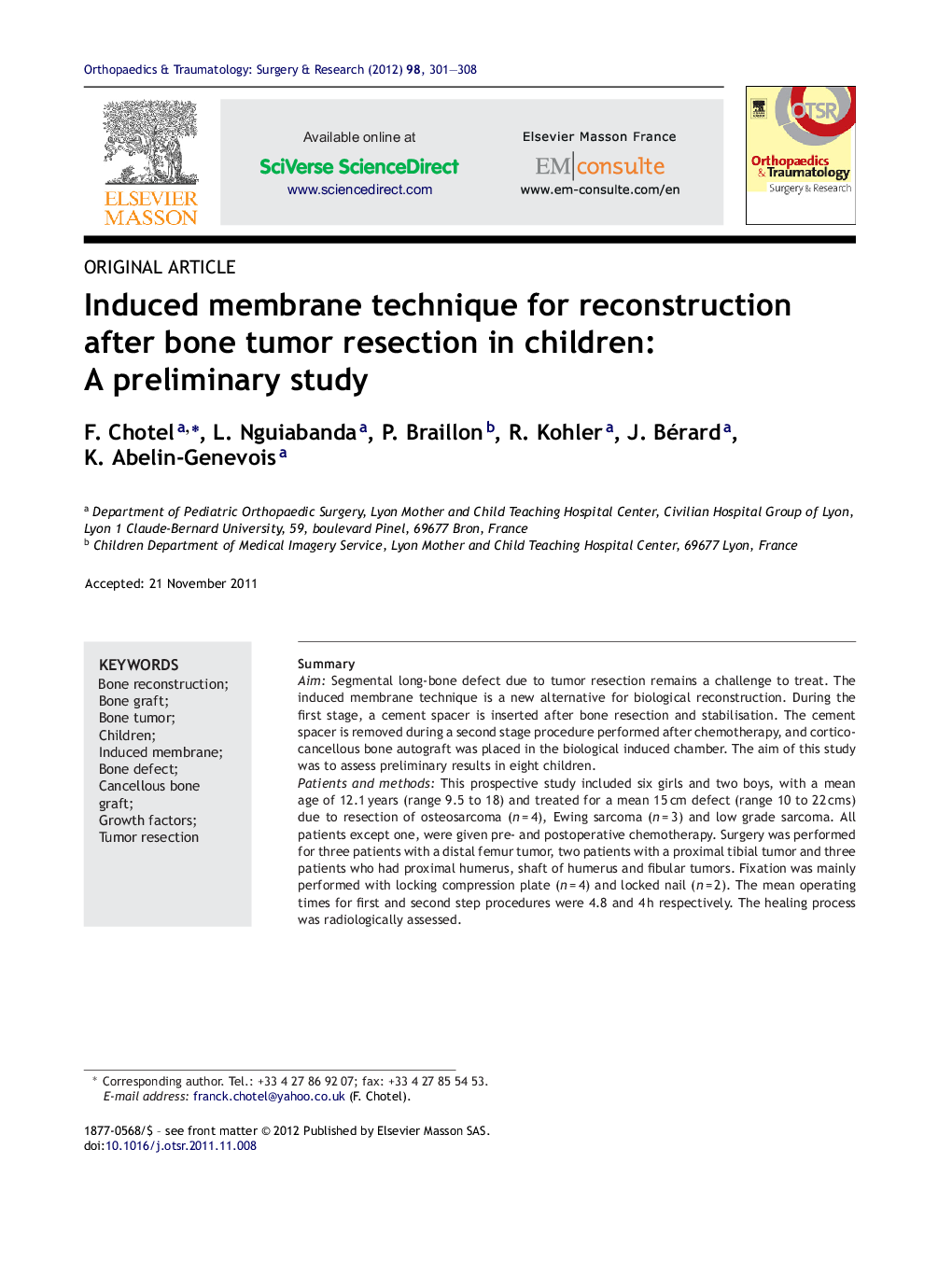| Article ID | Journal | Published Year | Pages | File Type |
|---|---|---|---|---|
| 4082106 | Orthopaedics & Traumatology: Surgery & Research | 2012 | 8 Pages |
SummaryAimSegmental long-bone defect due to tumor resection remains a challenge to treat. The induced membrane technique is a new alternative for biological reconstruction. During the first stage, a cement spacer is inserted after bone resection and stabilisation. The cement spacer is removed during a second stage procedure performed after chemotherapy, and cortico-cancellous bone autograft was placed in the biological induced chamber. The aim of this study was to assess preliminary results in eight children.Patients and methodsThis prospective study included six girls and two boys, with a mean age of 12.1 years (range 9.5 to 18) and treated for a mean 15 cm defect (range 10 to 22 cms) due to resection of osteosarcoma (n = 4), Ewing sarcoma (n = 3) and low grade sarcoma. All patients except one, were given pre- and postoperative chemotherapy. Surgery was performed for three patients with a distal femur tumor, two patients with a proximal tibial tumor and three patients who had proximal humerus, shaft of humerus and fibular tumors. Fixation was mainly performed with locking compression plate (n = 4) and locked nail (n = 2). The mean operating times for first and second step procedures were 4.8 and 4 h respectively. The healing process was radiologically assessed.ResultsAfter a mean follow-up of 21.6 months (15 to 30), all patients were free of disease and seven had bony union. For the lower limb reconstructions, full weight bearing was possible after a mean of 116 days (range90 to 150) following the second stage. Mean time to bone union was 4.8 months (1.5 to 10). The early Musculoskeletal Tumor Society (MSTS) score was 25.2/30 (range 20–30). Complications were: non-union (n = 1), paradoxical graft resorption (n = 1) requiring graft revision.ConclusionThis two stage procedure reduces the operating time during the first stage and it also reduces early complications. Rapid bone union is objectively obtained despite major bone resection and the patients receiving chemotherapy.SignificanceThe induced membrane technique could be an excellent alternative for biological reconstruction after tumor resection in children.
